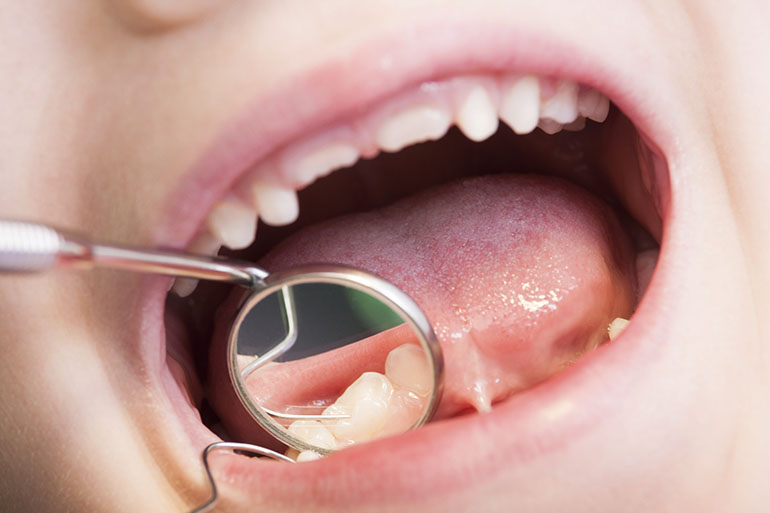The State of California’s dental health system for the poor is “dysfunctional” according to a scathing report issued Friday by a bipartisan oversight commission.
The program, Denti-Cal, “ranks among state government’s greatest deficiencies,” said the report by the Little Hoover Commission, a statutorily independent oversight agency.
The state bureaucracy that runs Denti-Cal draws only part of the blame. The legislature, the governor’s office, and the political culture of California share culpability for decades of neglect and strategic misdirection, the commission says.
The program falls “disastrously short in providing dental care to a third of California’s population and more than half of its children.”
A more vivid description comes from Pedro Nava, the commission’s chairman:
“In California we have kids’ teeth rotting out of their heads,” he told CHL. “That’s utterly inexcusable.”
The report makes grim reading. California faces an “epidemic of tooth disease in which toddlers by the thousands have mouthfuls of cavities, children and adults are plagued with toothaches, whole counties have no Denti-Cal providers and families don’t understand basic preventative dental care,” it said.
Meanwhile, Denti-Cal has “thoroughly alienated the dental profession” with tangles of red tape and “reimbursement rates among the nation’s lowest,” the report said.
In sum, the commission said it’s time to “reboot” Denti-Cal.
The program is run by the state Department of Health Care Services, which oversees Medi-Cal, California’s version of Medicaid.
The department released a lengthy prepared response to questions from CHL, which includes this statement:
“DHCS is strongly committed to providing access to quality dental care for our millions of Medi-Cal members, and Director Jennifer Kent has publicly stated that improving the Denti-Cal program is one of her top priorities.”
Nava has heard it before. “I have been completely underwhelmed by the response of the department,” he said. “Their efforts have been far too little and far too late.”
It’s not just the department though. Acccording to the report, “Blame goes so much deeper.”
“Successive legislatures and administrations,” the commission said, “have underfunded the Denti-Cal program and slashed reimbursement rates for dental providers to national lows. The state has historically lacked any strategy to prevent dental disease among its neediest populations.”
Evidence is widespread that bad dental health can seriously affect general health, making more people sick and driving health costs even higher.
But in California, there is a Denti-Cal dentist shortage.
Many dentists say they lose money on state-funded patients, so caring for them becomes a form of charity work.
John Blake is a dentist who gave up a private practice in Long Beach to run the Children’s Dental Health Clinic in Long Beach, where about 85 percent of patients are on Denti-Cal.
Blake said he just wants to break even — the business is a non-profit — 25 percent of his overhead is paid for through donations and fund-raising events. It’s impossible to cover costs with the low payments from the state, he said.
“A lot of my colleagues used to take Denti-Cal, but it’s not just the low rates, it’s that the hassle of the system is so much worse than reimbursement. The hassle factor just got to be too much,” Blake said. “They just gave up.”
Little Hoover more formally addressed the hassle factor, noting that copious pre-authorizations for basic procedures are a major hassle, never mind a a clunky billing system, much of it still paper-based, and a 22-page application form just to participate in the program.
Camille Nishikawa is a dentist in Los Angeles who doesn’t have those problems. She runs the QueensCare mobile dental clinic in partnership with USC Medical Center, which travels to the poorest parts of LA to take care of kids’ teeth. The mobile dental van is funded by grants; it doesn’t accept any money from patients or from Denti-Cal.
Organizational dysfunction is only part of the problem with Denti-Cal, Nishikawa said. Many poor people who are eligible for the program’s benefits don’t even know about them.
“A lot of the community isn’t aware of what they’re entitled to,” she said. “And if they do, they don’t know where to go to find a dentist.”
Ruth Sandoval is one of those low-income people, a mostly Spanish-speaking mother of two from Los Angeles. She said she had no idea she and her two children could even get dental care as part of their Medi-Cal program. “It has been hard to find a dentist; it’s very hard to find one,” Sandoval said.
She went to a clinic in LA for a different health problem and discovered a dentist on staff. She’s grateful for that, she said, because she wouldn’t have a dentist otherwise. “It’s so important to us, we were so happy to find her there,” Sandoval said.
Most low-income Californians aren’t that lucky. Only about half of the children eligible for dental coverage actually see a dentist, said Jenny Kattlove of the Santa Monica-based Children’s Partnership advocacy group.
She said the severity of the dental problem was accurately outlined in the Little Hoover report, saying it lays out “an ambitious but necessary path” toward revamping the entire low-income dental system.
People think of dental care as just getting a teeth-cleaning, and that it’s not seen as a health issue.
“Look, when children don’t get the oral health care they need, they suffer in pain,” she said. “Untreated dental problems actually can lead to death, I don’t know what’s more health-related than that.”
Nava said access problems may only get worse as more Californians are added to the Medi-Cal rolls. In mid-May, an estimated 170,000 undocumented children will become eligible for full Medi-Cal benefits, including dental care, and Nava worries that they won’t get it.
Correction: An earlier version of this story included an incorrect name for California’s Medicaid program. The correct name is Medi-Cal.
